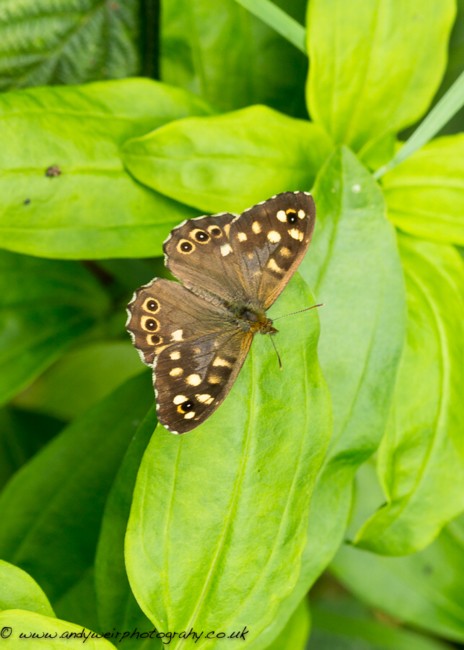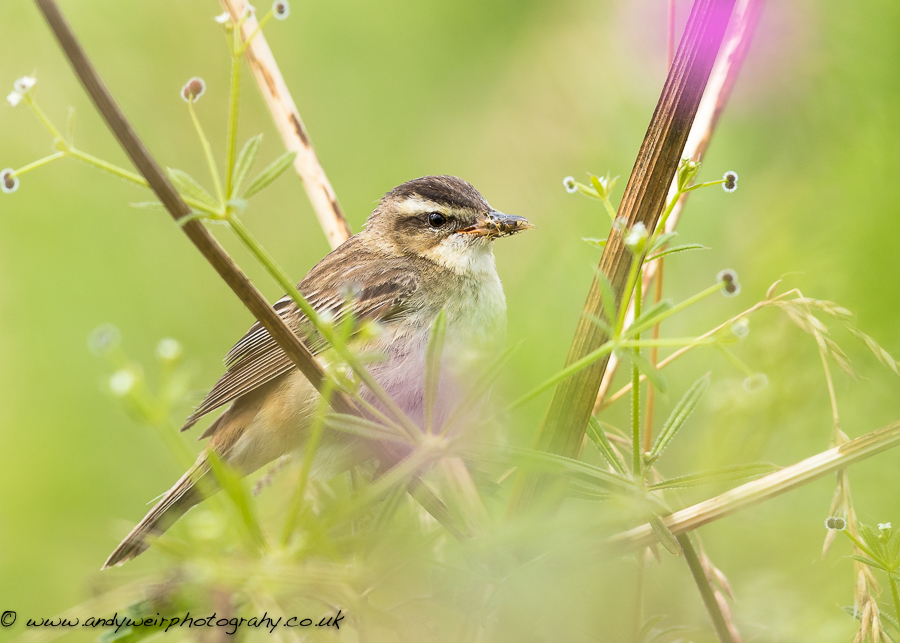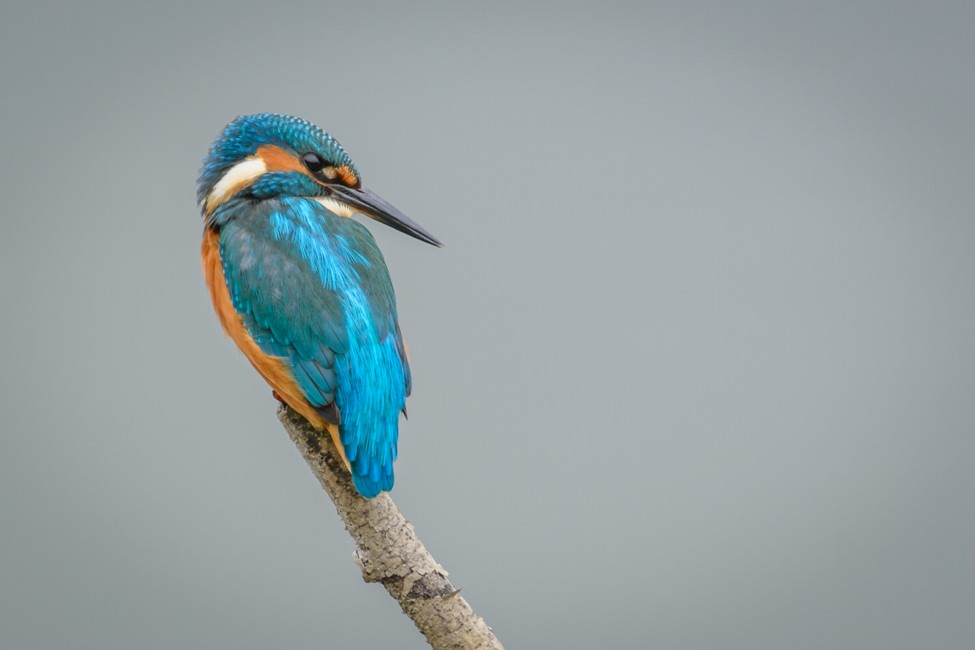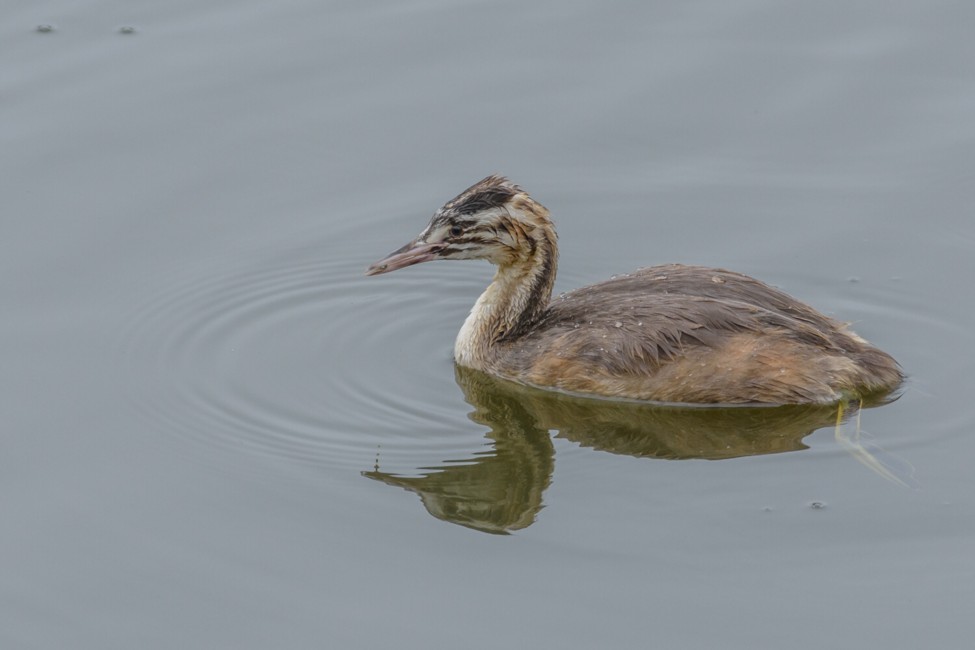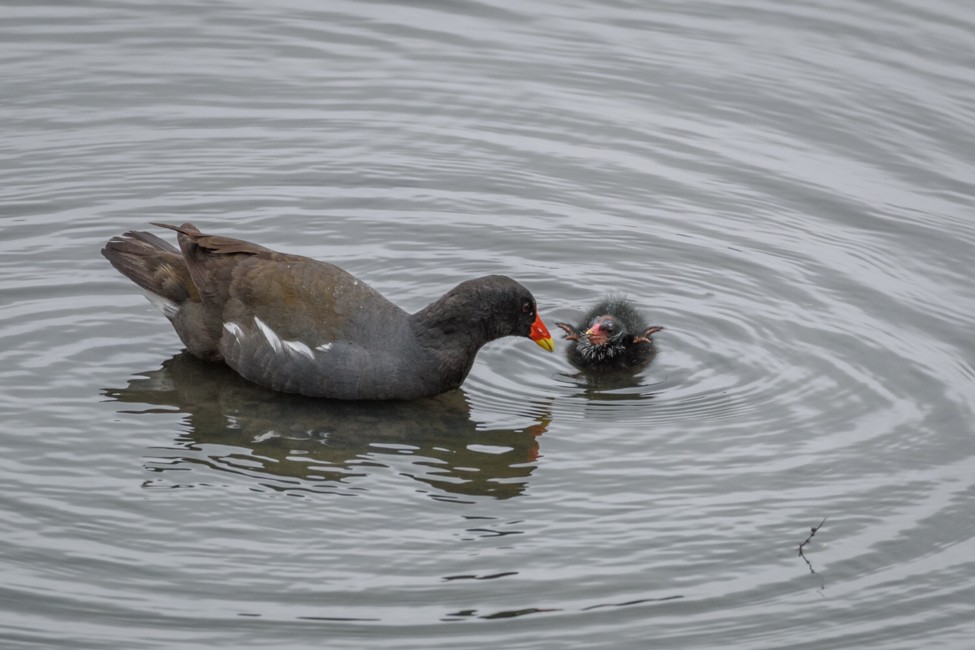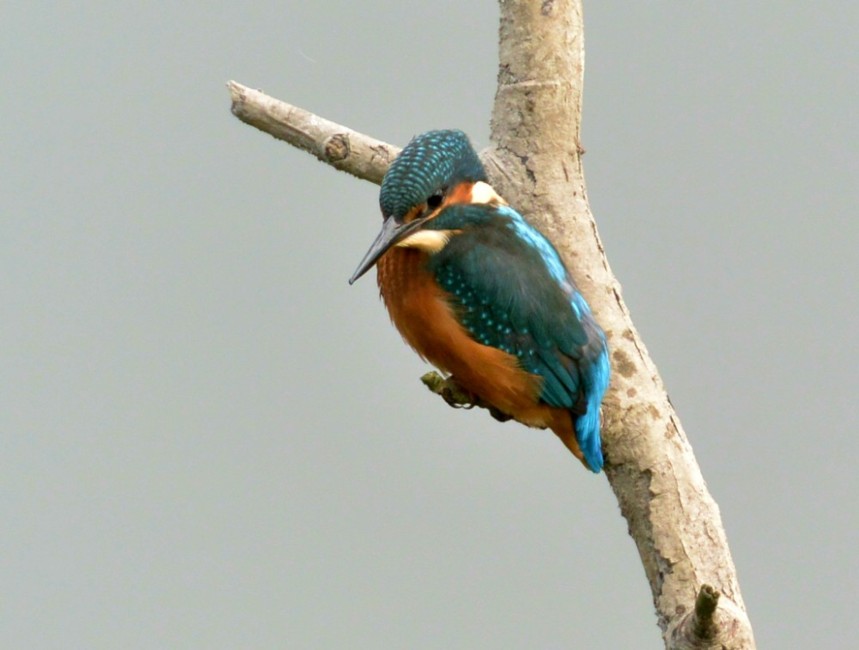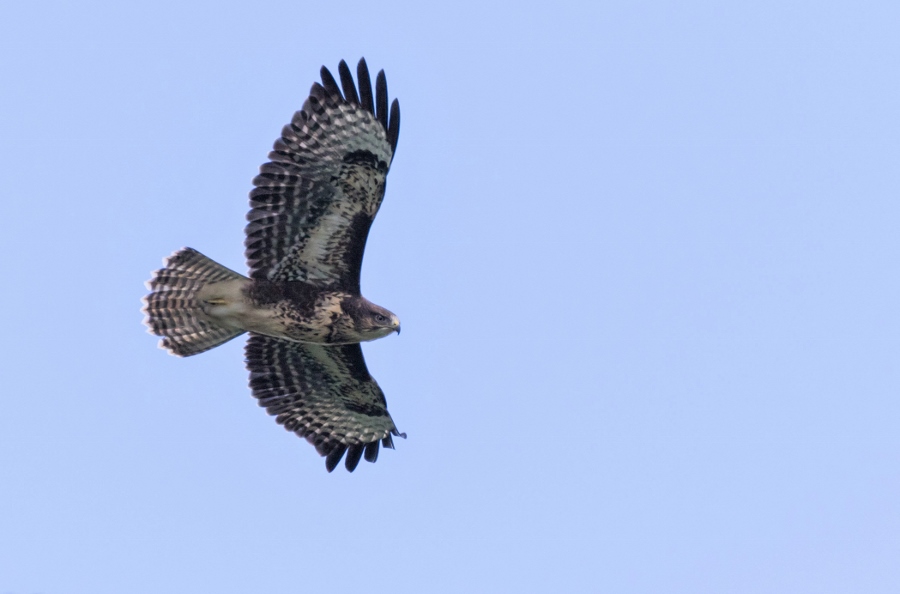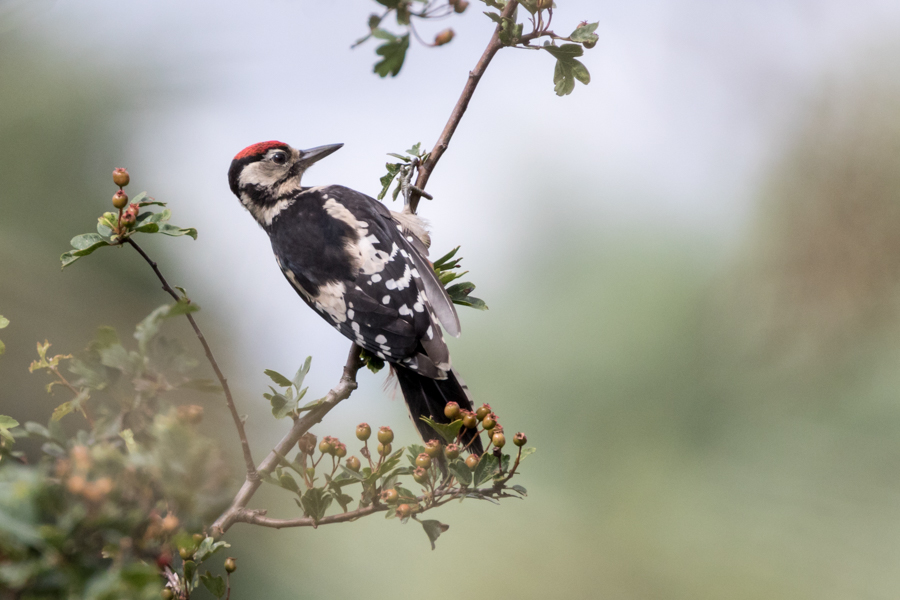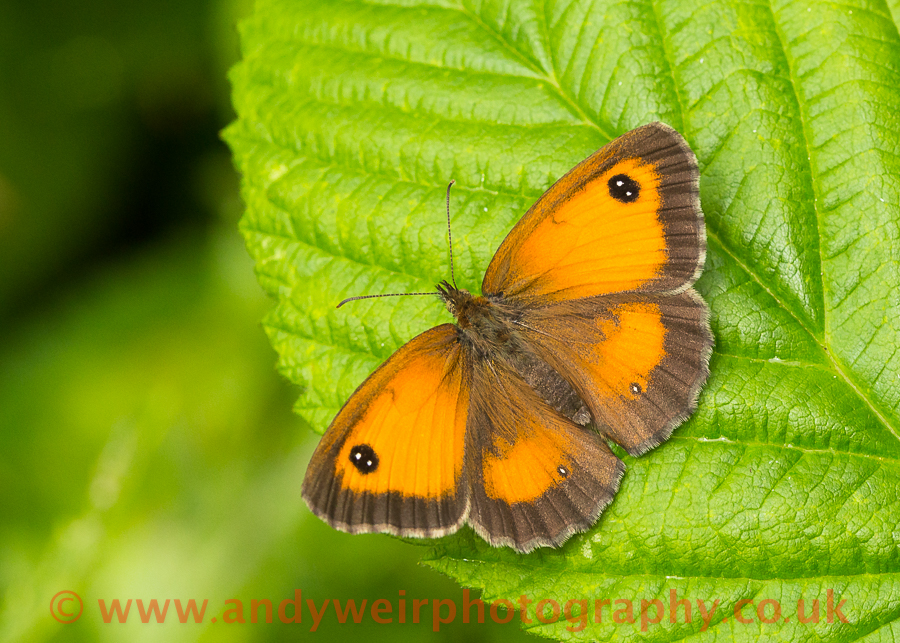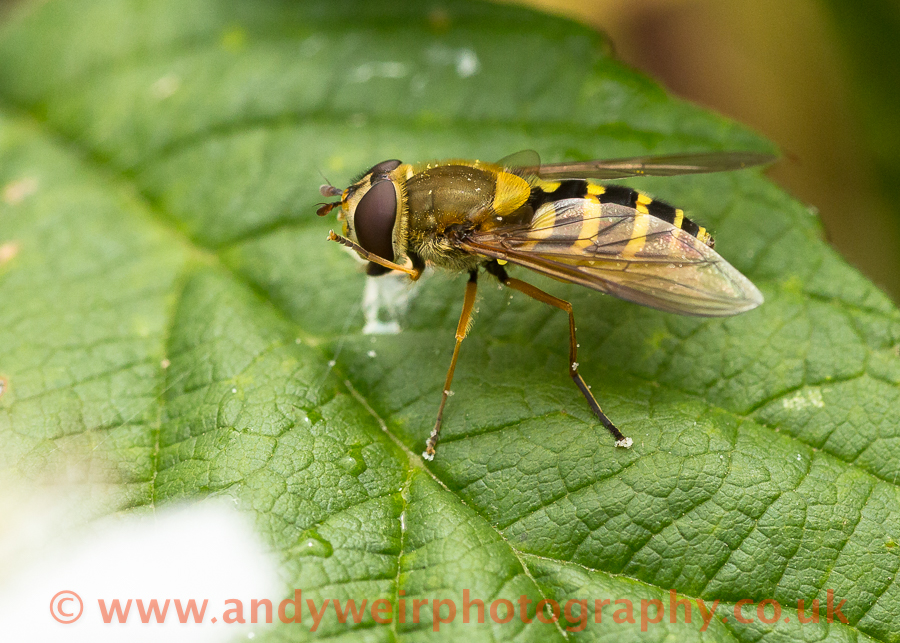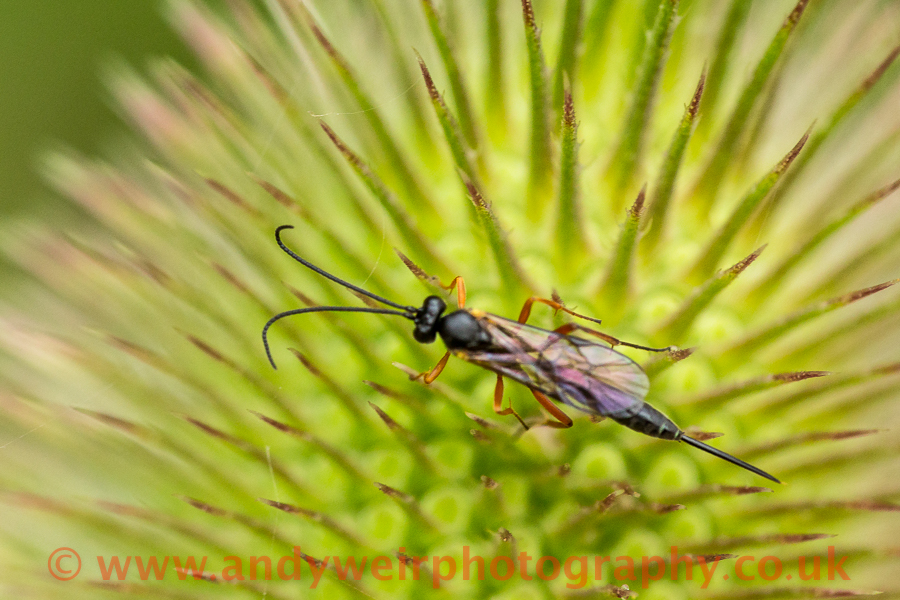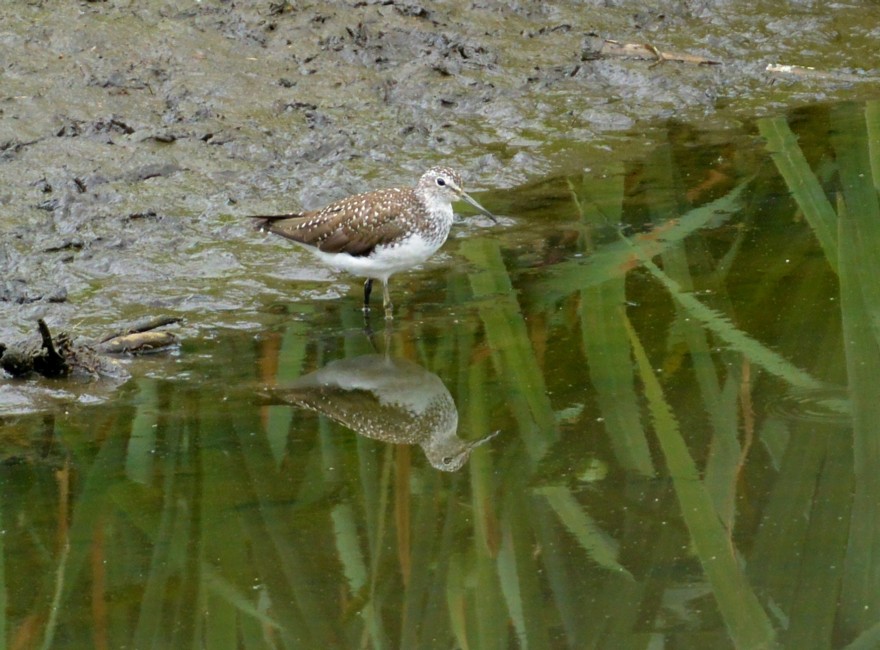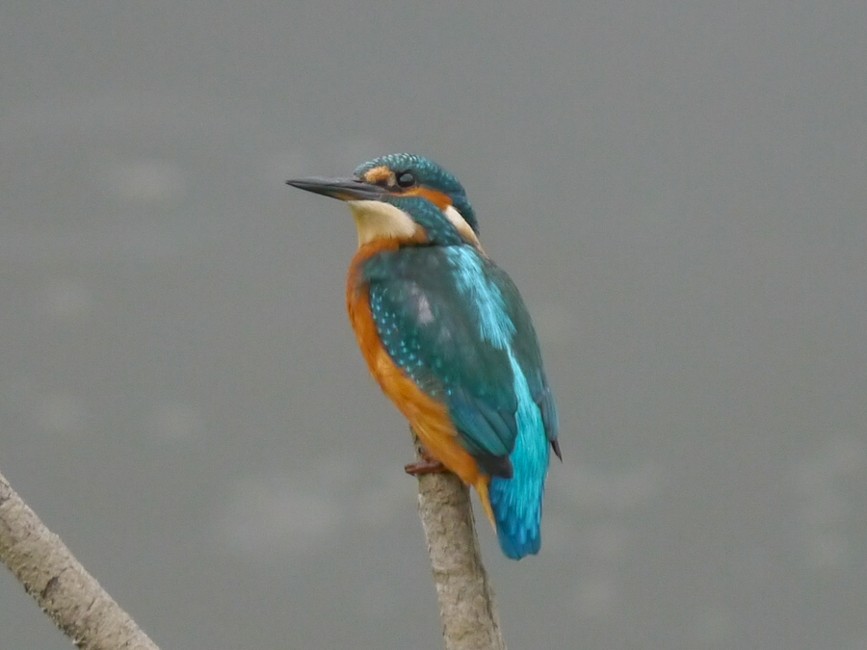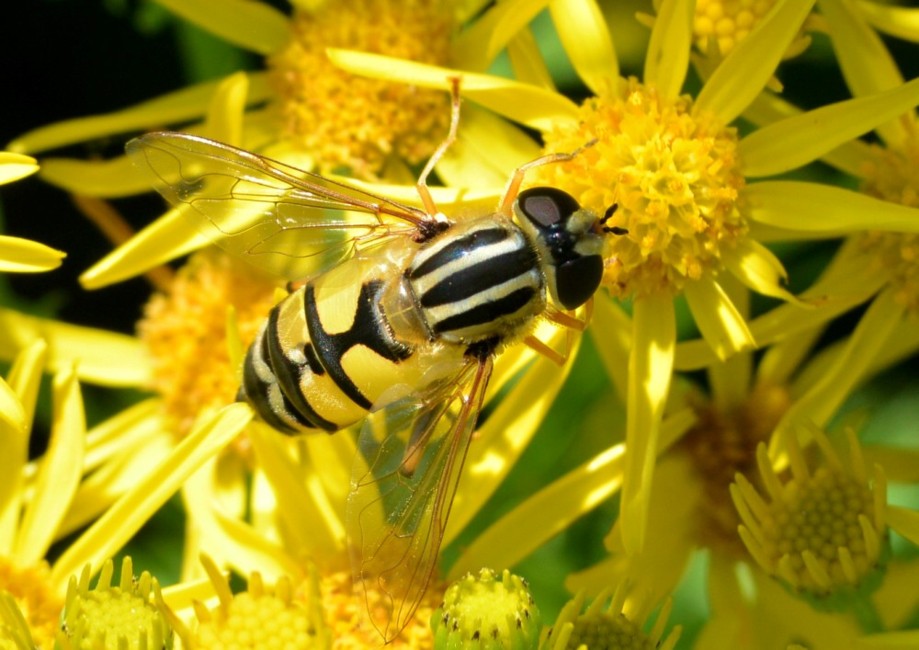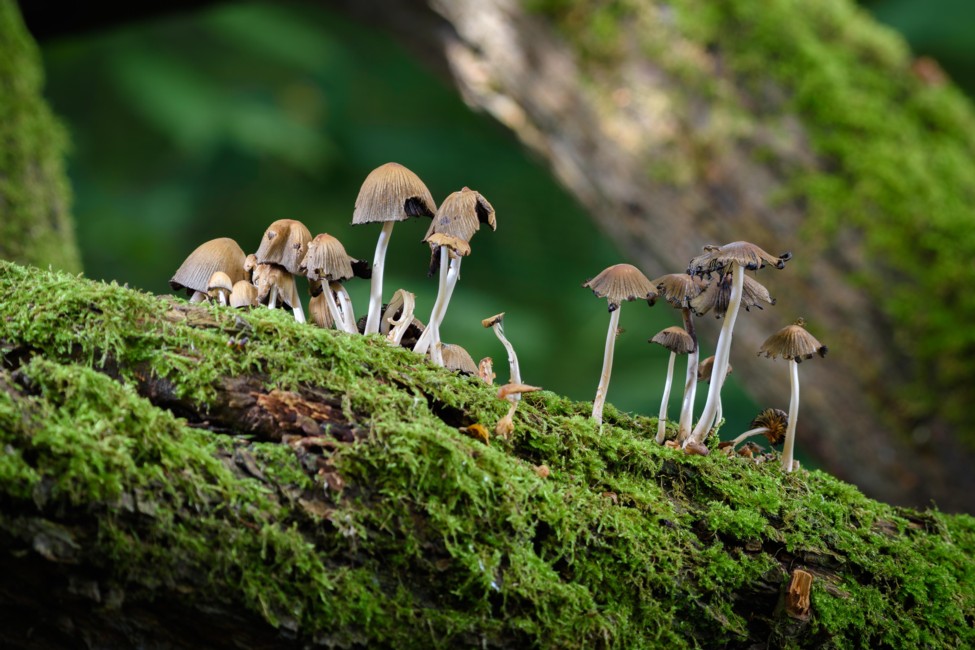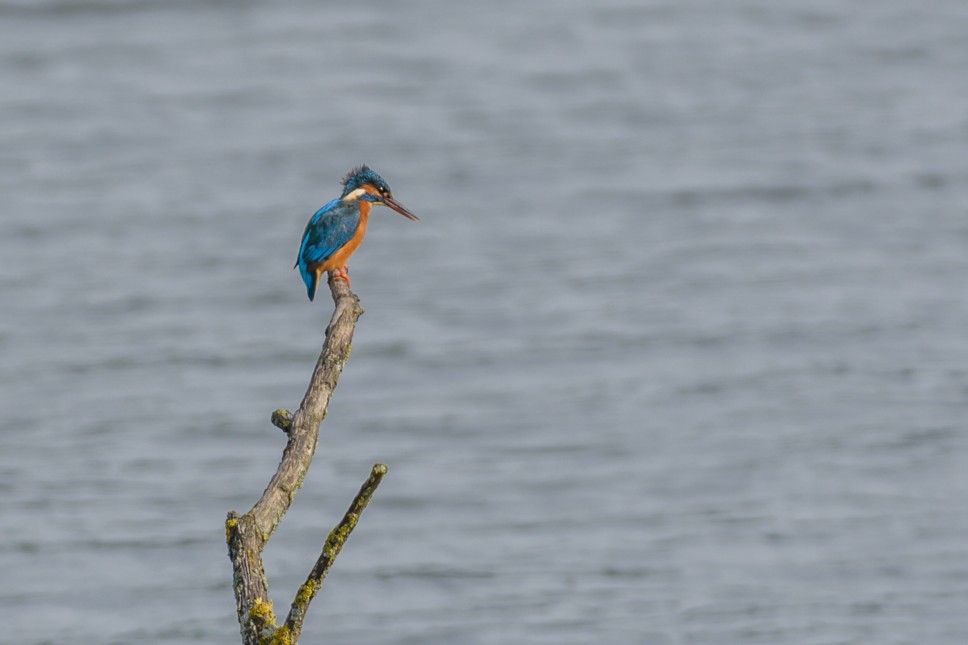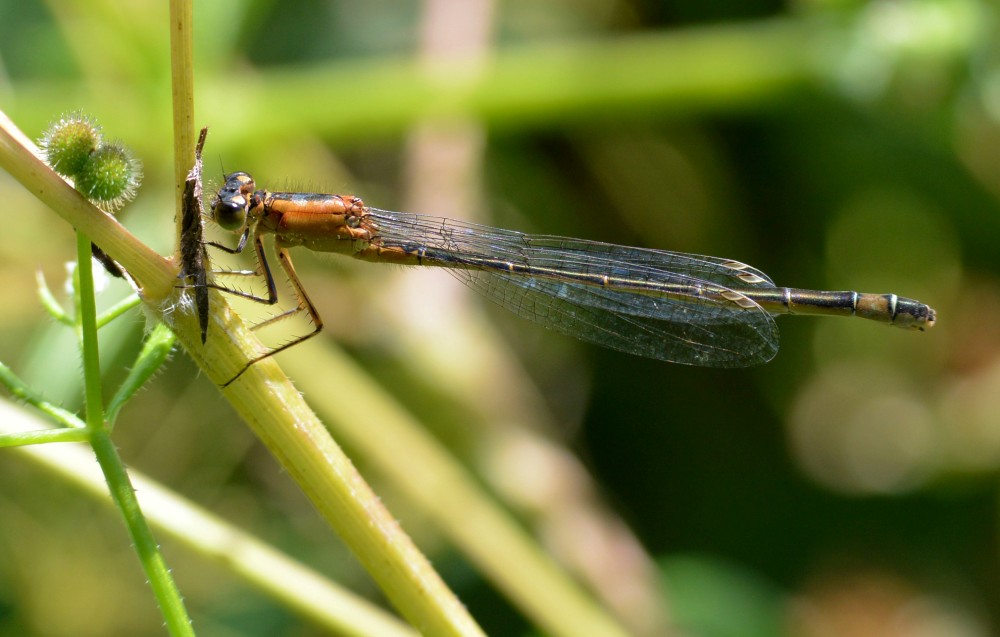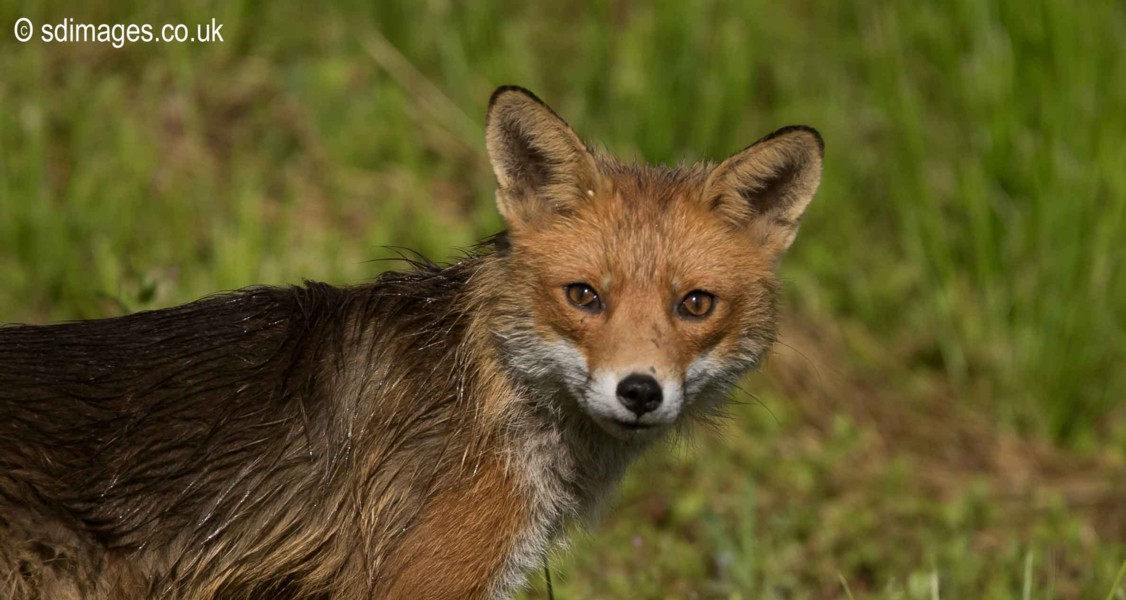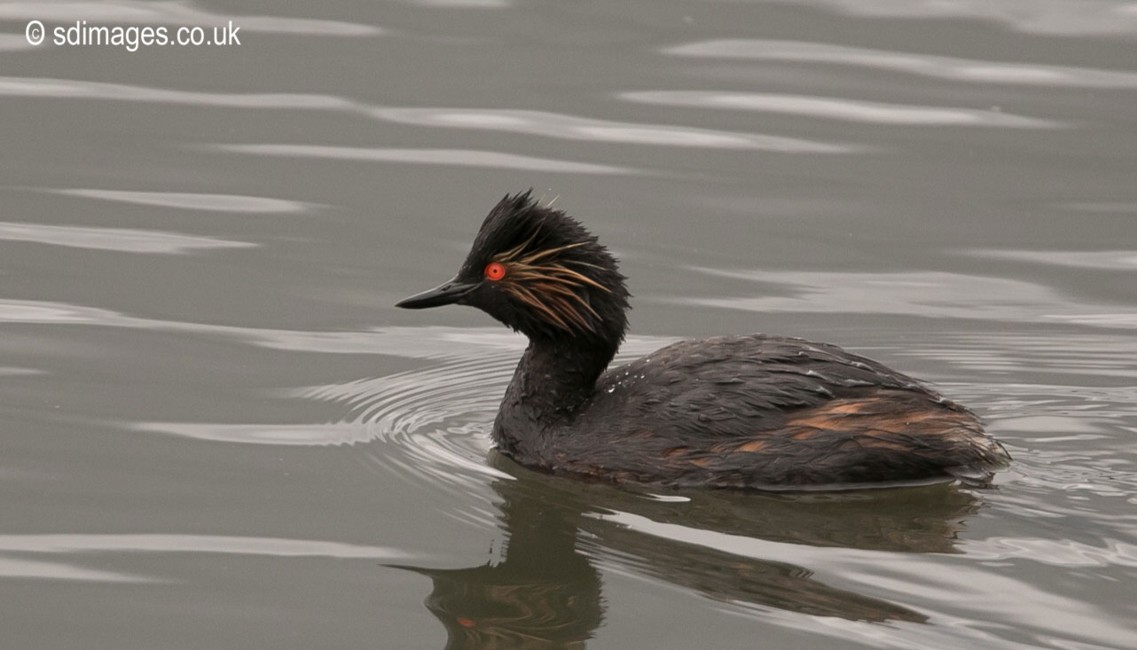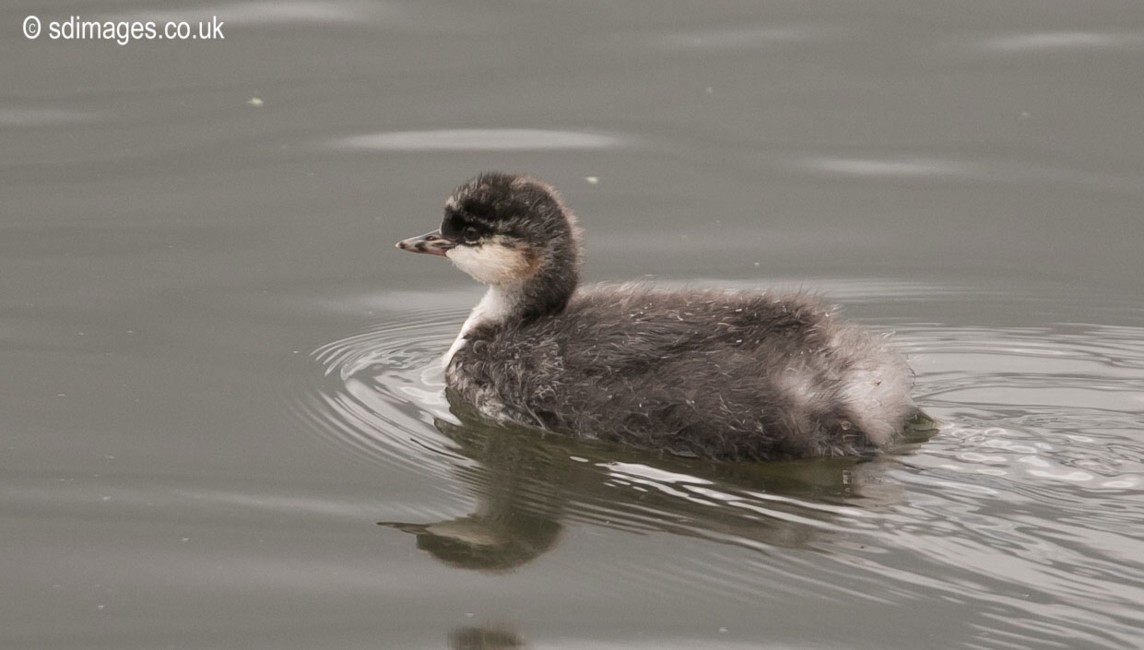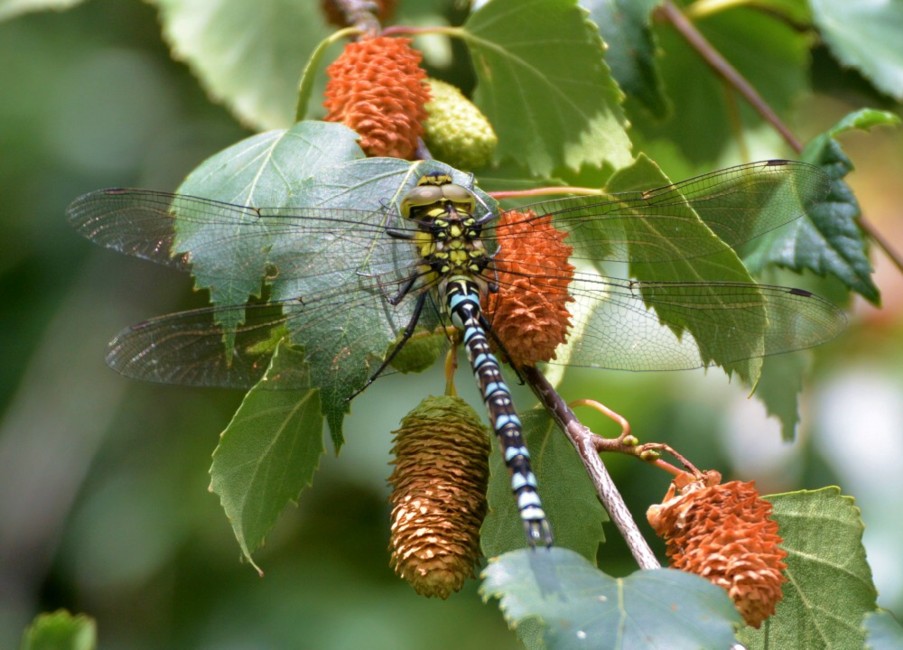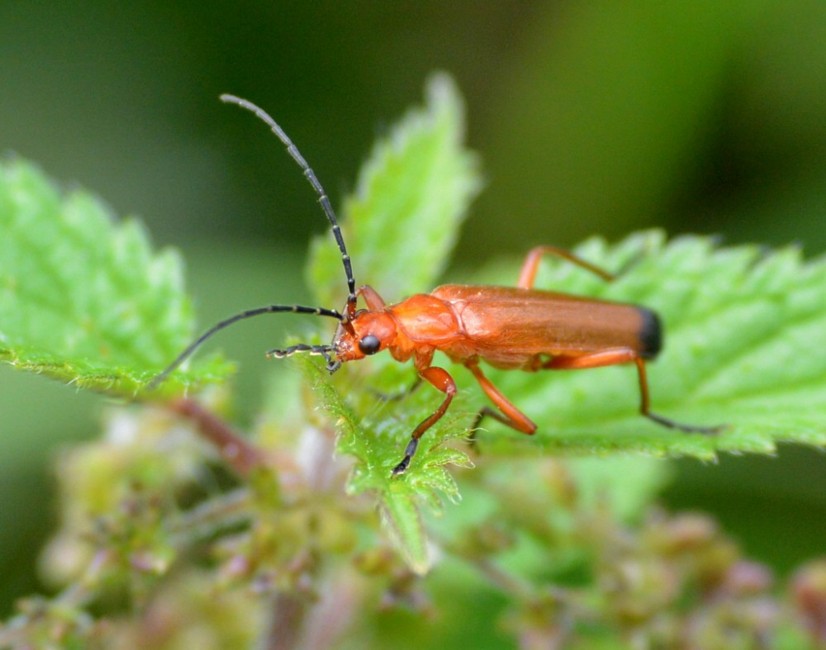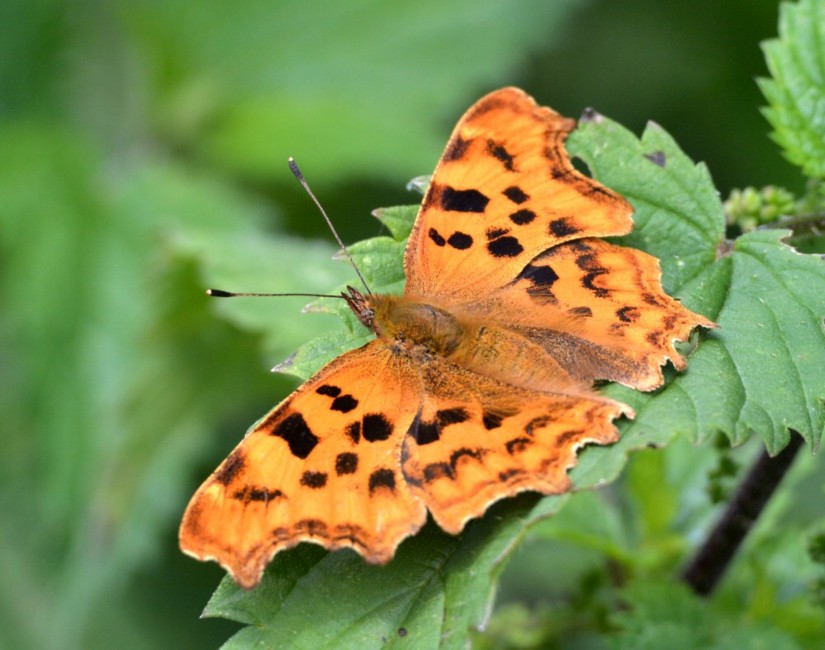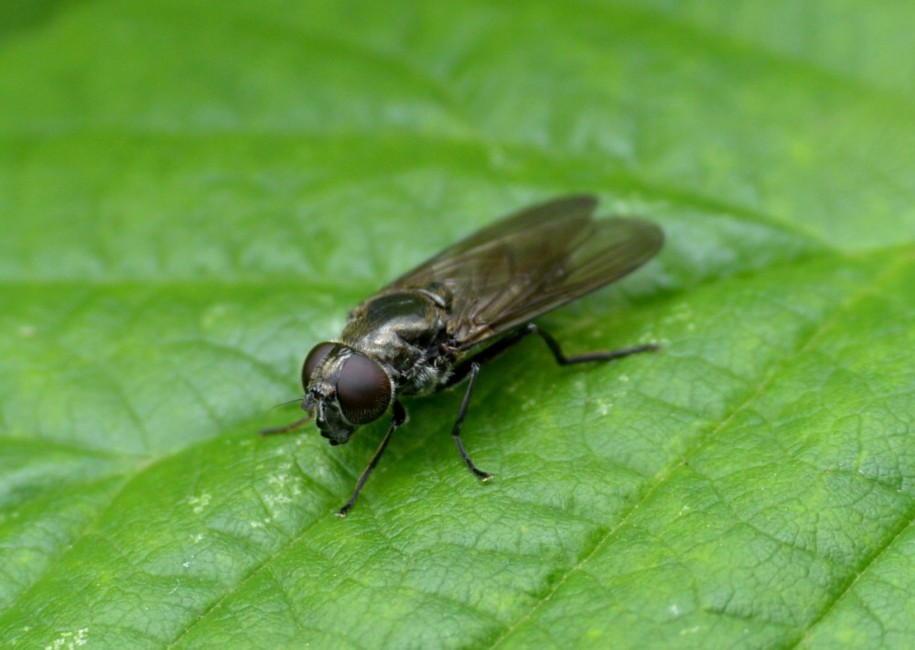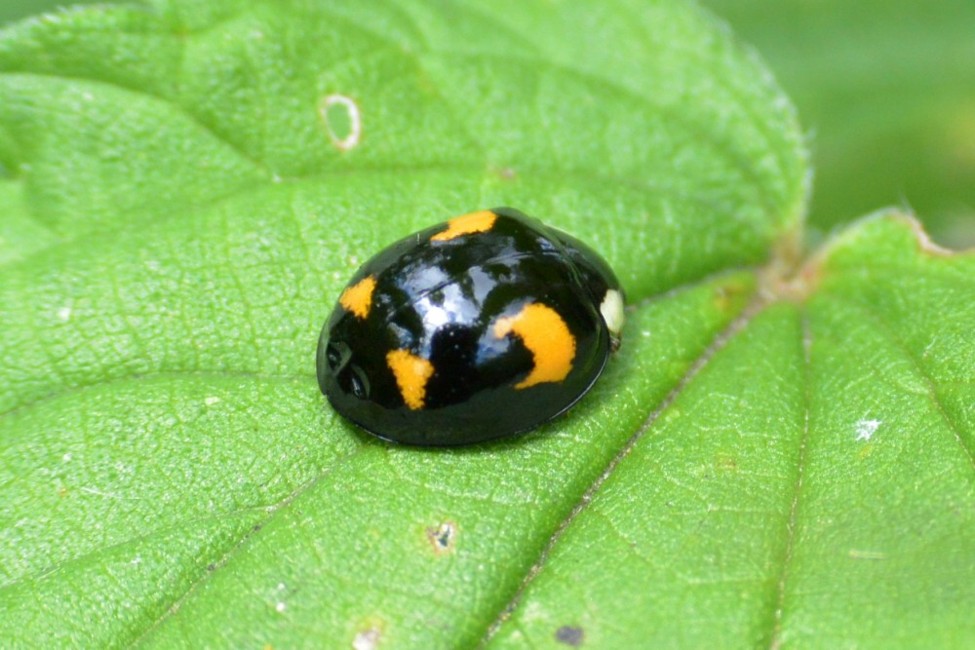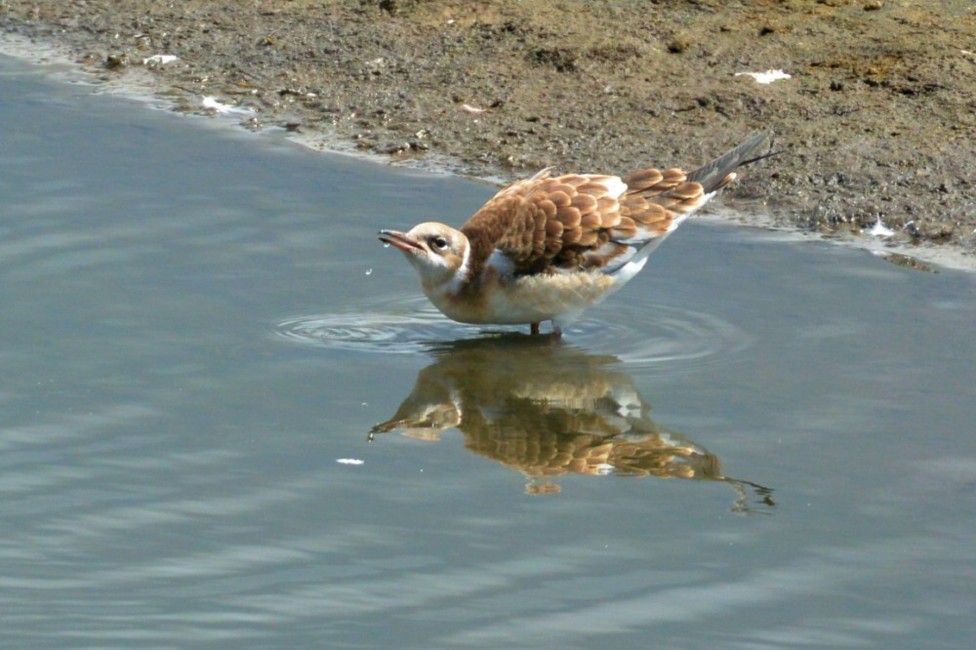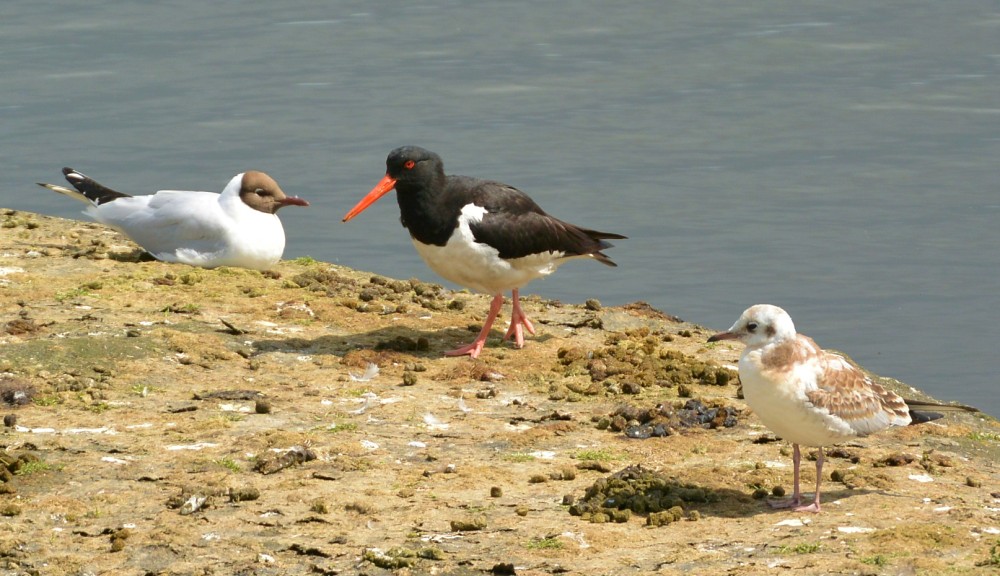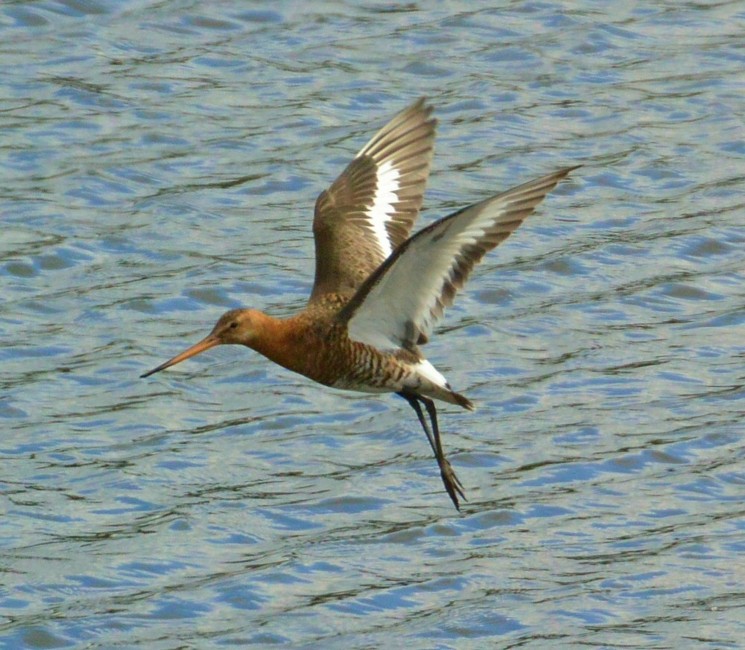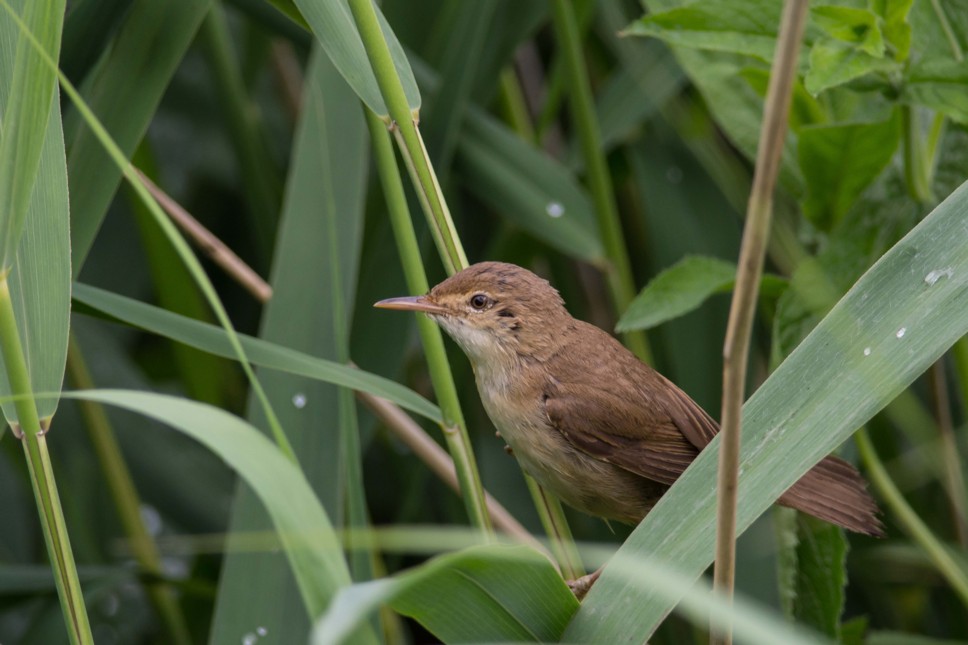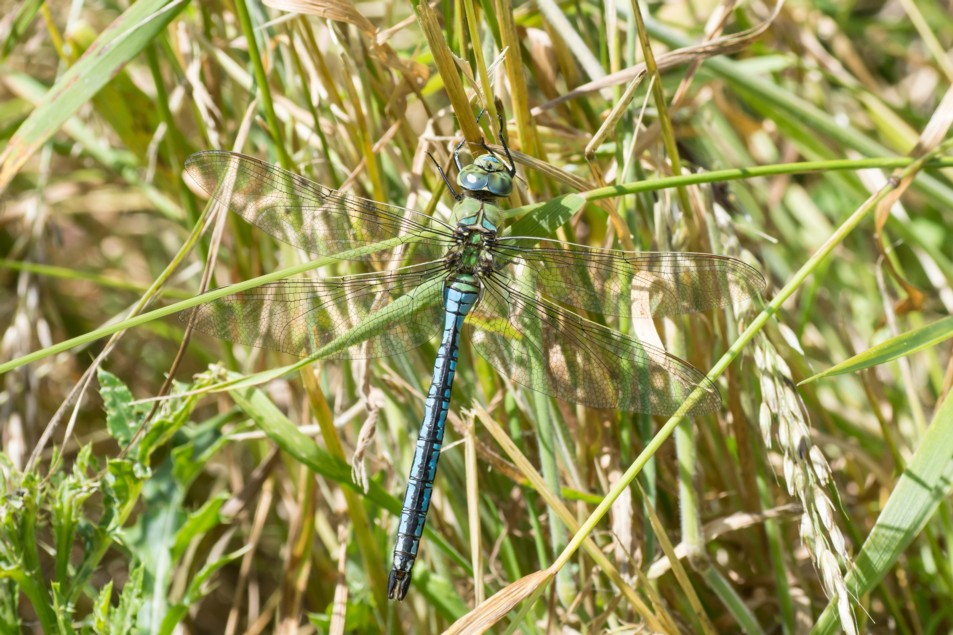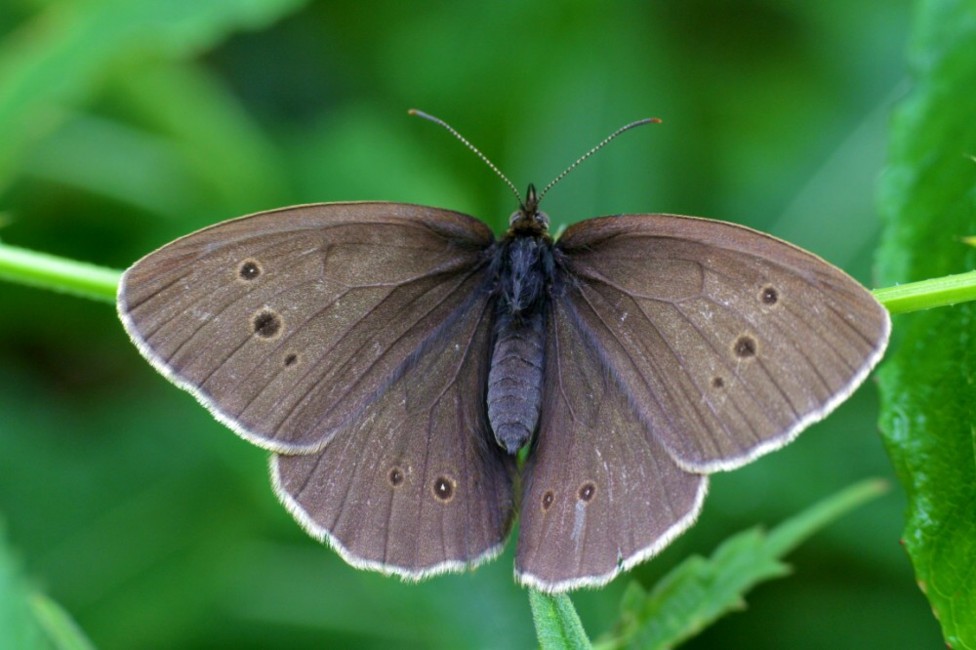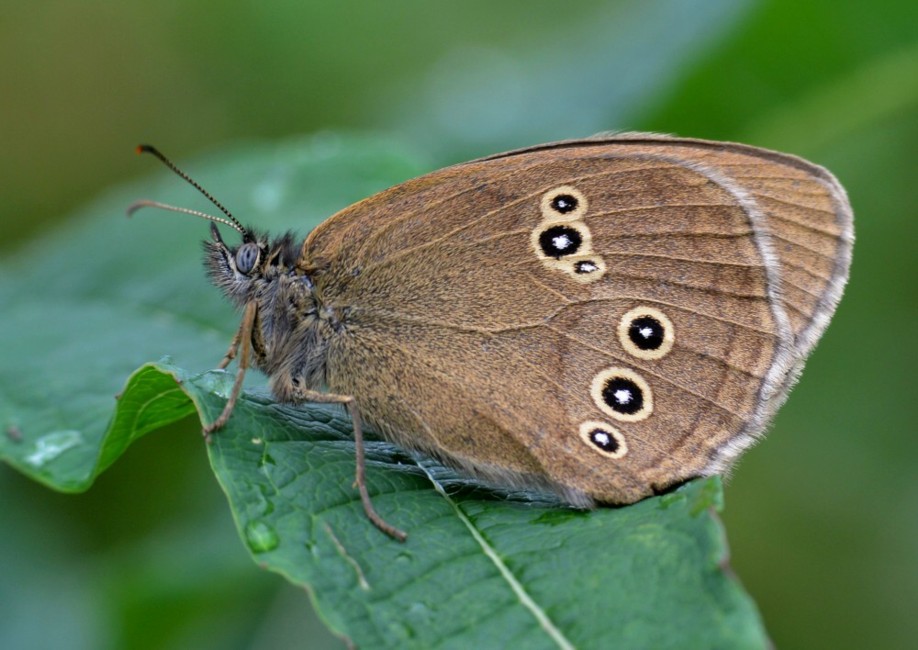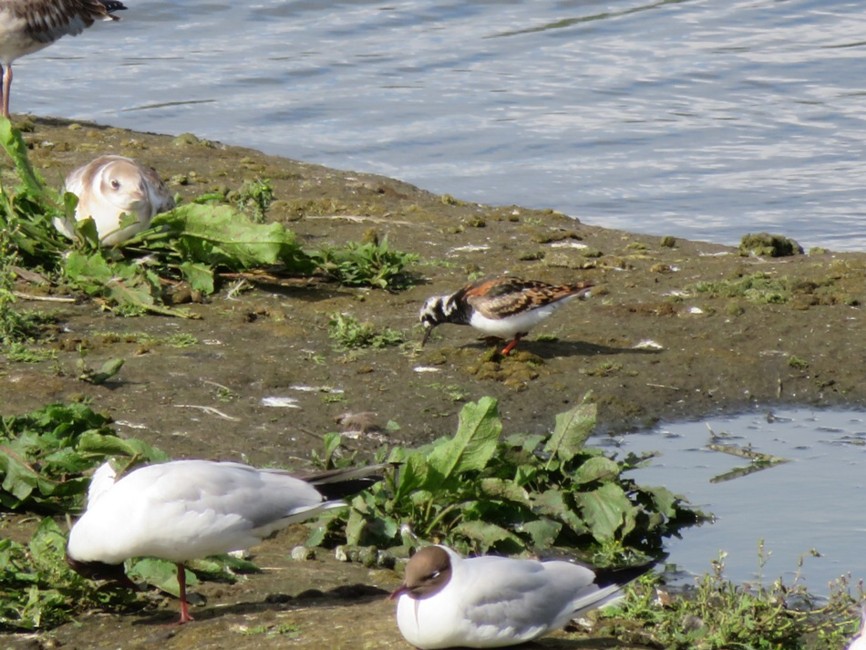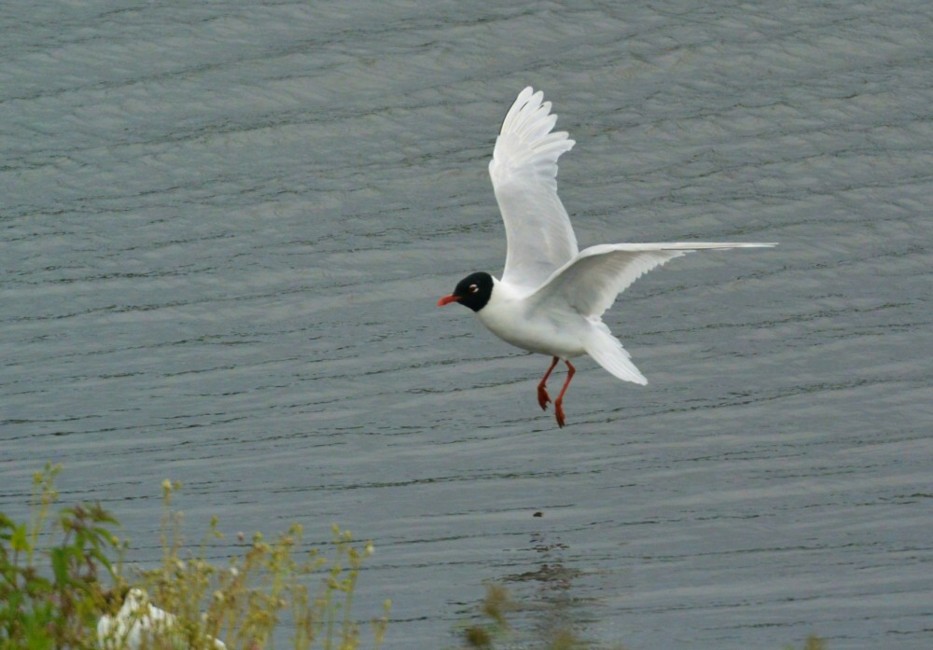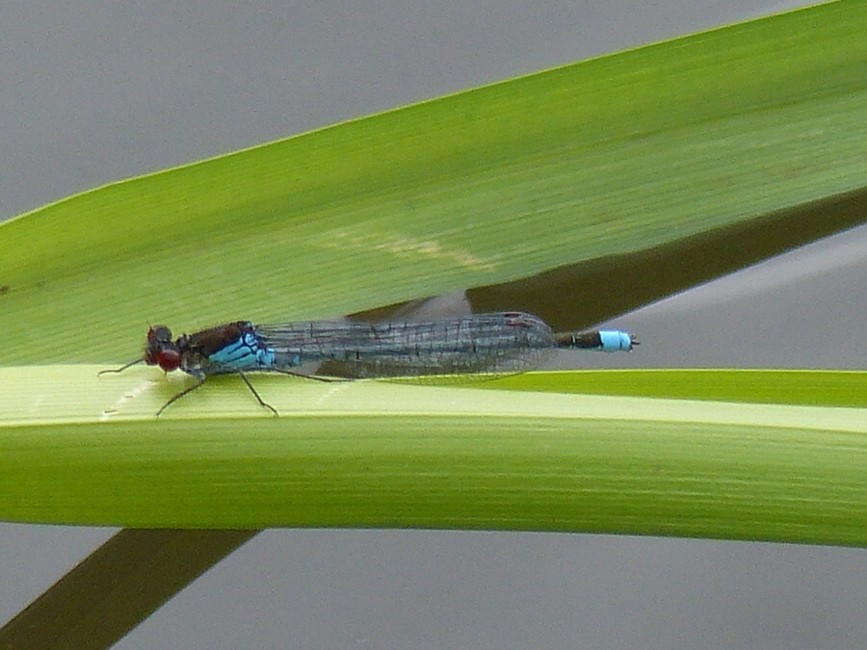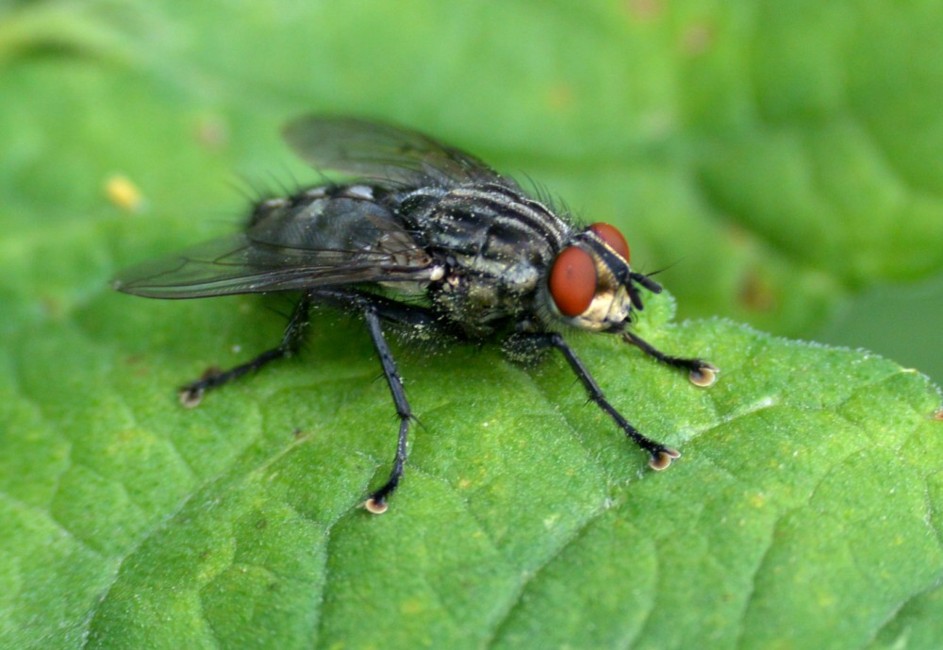Woolston Eyes Monthly Sightings
2016-07-30
Another beautiful, early morning on No.3 bed produced a good variety of birds. A light wader passage was evident, with 3 Common Sandpipers, 2 Green Sandpipers, 3 Black-tailed Godwits (all adults of the Icelandic race), 4 Snipe and a few Lapwings. There are still six juvenile Black-necked Grebes present, with some still being fed at this very late date. In addition, George Dunbar had a sighting of Barn Owl early on, while Kieran Foster’s ringing team caught their second juvenile Cetti’s Warbler of the summer, along with Common Sandpiper and Kingfisher amongst the commoner stuff.
Cheers David Bowman (with David Spencer, Dave Steel, Alan Warford, Paul Hazlehurst, Helen Allan and George Dunbar)
Submitted by: David Bowman
2016-07-29
Kingfisher
This was my first time back since the stick was put back in place and he certainly put on a good show!
Submitted by: David Mercer
2016-07-29
Juvenile Great Crested Grebe
He was getting his fair share of sticklebacks!
Submitted by: David Mercer
2016-07-29
Moorhen
It was lovely watching how tentative the parents were, this little chap was one of four and the other three were sheltering under mothers wing.
Submitted by: David Mercer
2016-07-29
Whitethroat
This little fellow was looking a little worse for wear!
Submitted by: David Mercer
2016-07-28
An dawn visit to No.3 bed, arriving at 4.45 am this morning, produced a stunning sunrise and some excellent birds. Three Black-tailed Godwits were joined on the Morgan Hide scrape by 3 Green Sandpipers and 1 Common Sandpiper. An early returning Snipe dropped in, then a Common Tern flew south, followed by a hunting juvenile Peregrine heading north. Black-necked Grebes were still feeding relatively small young and 2 juvenile Sparrowhawks chased a Magpie before perching in a dead Birch tree. A Kingfisher provided lots of entertainment, constantly dashing around the scrape and seeming to think that goose droppings on the scrape were small fish. Cheers David Bowman (with George Dunbar)
Submitted by: David Bowman
2016-07-27
Great Spotted Woodpecker (Dendrocopos major) juvenile seen on bank area
Submitted by: Hazel Rothwell
2016-07-26
A Dunlin was on the scrape on Monday evening together with a total of 221 Gadwall on No.3 bed. Today’s walk found 2 Peregrines on the viaduct of which one was a juvenile. No less than 7 Green Sandpipers were on No.3 bed and a single Common Sandpiper. Summer butterflies are at last beginning to emerge albeit in less than usual numbers. Reserve wide counts over the past week included 261 Gatekeeper and 132 Meadow Brown. Over a hundred “whites” were counted of which I estimate that about 60 were Small Whites and the rest Green-veined Whites. Three Peacocks may be the start of the summer emergence which usually takes place towards the end of July. There have been no sightings of Purple Hairstreak so far and only a single Ringlet seen by Les Jones on No.3 bed.
Submitted by: Dave Hackett
2016-07-24
A few Emerald Damselflies were present on No.1 bed yesterday. Also spotted were both Ruddy and Common Darters and a Black-tailed Skimmer.
Photo of a female Emerald Damselfly.
Submitted by: Brian Baird
2016-07-23
Another rather still and sultry morning, with the highlights being: 1 Green Sandpiper, 3 Yellow Wagtails, 1 Little Ringed Plover, 12 Black-necked Grebes (5 adults and 7 young), 1 Peregrine, 1 Willow Tit, 90 Lapwings, 70 Swifts, 32 Swallows, 6 Sand Martins, 7 Buzzards, 1 Sparrowhawk, 3 Stock Doves. Also 1 each of Grasshopper Warbler and Garden Warbler ringed by Mike Miles et al.
The photo is of a Green Sandpiper from earlier in the week
Cheers, David Bowman (with Brian Martin, Dave Steel, David Spencer, Alan Warford, Brian Baird, Helen Allan and Les Jones)
Submitted by: David Bowman
2016-07-21
Common Sandpiper from the John Morgan hide.
Submitted by: David Spencer
2016-07-21
At least 4 Green Sandpipers were present this evening and 3 Snipe flew north over No.3 bed. The Kingfisher stick has been reinstated and is once again providing excellent photo opportunities.
Submitted by: David Spencer
2016-07-20
Another hot sticky morning with not much moving on No.3 bed. Just one Green Sandpiper today, along with 12 Black-necked Grebes (6 adults and 6 young), 1 drake Ruddy Duck,1 Kingfisher, 2 Willow Tits and 85 Lapwings plus the other regular species. Spent the heat of the day wandering round No.2 bed trying to photograph insects!
Picture of a hoverfly sp.
Cheers David Bowman
Submitted by: David Bowman
2016-07-18
Fungi?
I spotted this on the way into the rotary hide and I thought it made a good picture as it was growing on the branch of a tree.
Submitted by: David Mercer
2016-07-18
Kingfisher
This was my first sighting ever of the Kingfisher at the reserve, This was from the JM hide at the far end of the first finger of the scrape so it’s a bit far to be able to get a decent picture.
Would it be possible you could put a branch back in front of the hide please?
Submitted by: David Mercer
2016-07-16
A drizzly early morning on No.3 bed still managed to produce some good birds. Four Dunlin were followed by four Black-tailed Godwits, all adults in summer plumage of the Icelandic race, and two over-flying Yellow Wagtails. There are still plenty of Black-necked Grebes around and a pair with two tiny young gave us our eleventh brood of the year. Perhaps most rewarding was the sight of a brood of Teal - always the most difficult of the wildfowl to prove breeding. With the sluices open, water levels are dropping fast to start providing the optimum habitat for waders on autumn passage.
Cheers David Bowman (with David Spencer, Brian Martin, Paul Hazlehurst, Brian Baird and George Dunbar)
Submitted by: David Bowman
2016-07-14
2 Green Sandpiper and 1 Black-tailed Godwit were present this evening. Also 2 Whimbrel flew east over the bed. At least 4 juvenile Black-necked Grebes were still being fed by their parents, including this pair.
Submitted by: David Spencer
2016-07-14
Photo of a beetle from today, maybe Common Red Soldier Beetle.
Cheers David
Submitted by: David Bowman
2016-07-14
Photo of an unidentified (as yet!) fly species from today.
Cheers David
Submitted by: David Bowman
2016-07-14
Photo of a ladybird from today. A colour phase of Harlequin Ladybird, I think.
Cheers David
Submitted by: David Bowman
2016-07-14
An excellent late summer morning at Woolston Eyes, with north-north-westerly winds bringing in some south-bound migrants. Early on, 7 Black-tailed Godwits dropped in, followed by a single Whimbrel and 2 Oystercatchers. Then a juvenile Yellow Wagtail touched down briefly on the Morgan Hide scrape. Of the regular species, 11 Black-necked Grebes showed well (5 adults and 6 young), the local juvenile Peregrines were hunting actively all morning, the drake Ruddy Duck was seen briefly, along with Water Rail and Willow Tit. Lastly, 2 Green Sandpipers were together in the north-east corner before one flew towards the Tower Hide. Eight Brown Hawkers, 1 Southern Hawker and 4 Commas were also noteworthy.
Photo of one of the Black-tailed Godwits
Cheers David Bowman (with Brian Martin, John Verdon and Bert Lloyd)
Submitted by: David Bowman
2016-07-12
On No.3 bed found a total of ten broods of Tufted Duck with a minimum of 46 young of varying ages though majority are still small. Also, three broods of Little Grebe and two new broods of Great crested Grebes. The Tufted broods are doing fairly well despite the ever present Lesser Black-backed Gulls that have been seen to take a number of young. Three broods of Black necks found with single adults each feeding a single chick and a full grown independent young. 51 Gadwall in front of Rotary hide with 4 drake Pochard feeding among them.
Submitted by: Brian Martin
2016-07-13
one last one, A nice shot of the reed warbler taken on number 3 bed on 30th June
Submitted by: Keith Gallie
2016-07-13
I’m sending these two shots of reed warbler only out of interest because you can almost read the ring number it might be one the ringer have done at the eyes or could it be from further afield ps i hope ive done this right
Submitted by: Keith Gallie
2016-07-13
Emperor Dragonfly (Anax imperator)Number 3 Bed Taken along the path towards the meadows (sorry for a late upload)
Submitted by: Keith Gallie
2016-07-13
Another photo of the Ringlet from No.3 bed on Saturday
Cheers David
Submitted by: David Bowman
2016-07-09
We started early this morning and did our best (unsuccessfully) to cover No.3 bed before the rain set in. A Common Tern passed through early on, the pair of Ruddy Ducks turned up again on the south pool and we found another brood of Tufted Ducks in the north-east corner before the heavens opened. Slightly bedraggled, we got back to the Morgan Hide to observe yet another incident of predation on the bed by a Lesser Black-backed Gull, which took a small Tufted Duck chick. We estimate that losses of young of a variety of species, on the bed this year through predation, have now run into the hundreds. On a more up-lifting note, Les Jones found a nice Ringlet butterfly outside the Morgan Hide. They have only recently colonised the Reserve and I think this may be the first sighting this year.
Photo of the Ringlet butterfly.
Cheers David Bowman (with Dave Steel, David Spencer, Paul Hazlehurst, Helen Allan, Brian Martin, Les Jones and George Dunbar)
Submitted by: David Bowman
2016-07-08
A really interesting day, as we hosted a team from the BBC’s Countryfile programme. They were here to film a brief item covering our plans to develop a major new wetland on No.4 bed and how this links with our battle against invasive plants such as Giant Hogweed and Himalayan Balsam. The event was organised and presented by our good friend Roy Taylor, from the RSPB. I got there early to do some birding beforehand and, as usual, there were plenty of interesting birds to see. A Hobby flew in front of the Morgan Hide carrying what looked like a Swift, 2 juvenile Peregrines were hunting actively (presumably the fledged young from the Viaduct breeding site), a new brood of 2 young Black-necked Grebes was located (making 9 in all), the pair of Ruddy Ducks was still present, another brood of 8 young Tufted Ducks appeared and breeding was proved for Water Rail.
Photo of a Chiffchaff
Cheers David Bowman (with David Spencer, Brian Martin, Dave Steel and Les Jones)
Submitted by: David Bowman
2016-07-07
A warm, overcast, drizzly morning on No.3 bed managed to deliver some passage waders. The first returning Green Sandpiper was followed by 4 Black-tailed Godwits, though the 2 Oystercatchers may have been more local. A Common Tern also dropped in when the rain was at its heaviest. Out on the water, 12 Black-necked Grebes (5 adults and 7 young) were still present, along with a drake Ruddy Duck and 3 broods (1, 6 and 7) of small Tufted Duck young were a welcome sight. Aerial feeders included 60 Swifts plus double figure counts of all three hirundines.
The link to a video clip records the three Tufted Duck broods along with some other bits and pieces.
https://www.youtube.com/watch?v=S-jcsxwg_Wk
Cheers David Bowman and David Spencer
Submitted by: David Bowman
2016-07-06
Had my first sighting this season of Banded Demoiselle damselflies at the Weir this morning, where a male and a female were both present. Also spotted on the Reserve were four Brown Hawkers,one Black-tailed Skimmer and an Emperor dragonfly,all seen in flight.
Submitted by: Brian Baird
2016-07-06
On a very warm day on the Eyes spent some time searching for Black necked Grebes which have been rather elusive recently. In all, I found 5 adults and 4 young. Three of the young were full grown and an adult was feeding a fourth chick in front of the south platform. This bird was about a third grown and almost certainly from the 8th brood of the year first seen in late June. Likely that other BNGs and young are present in some of the hidden channels.
Submitted by: Brian Martin
2016-07-02
Turnstone viewed from the Morgan Hide at 5pm
Seen by Zoe Barrett and Steve Atkins. Brian Martin informs me that this is the second Turnstone seen at Woolston Eyes this spring but these are the first sightings of this attractive wader since 1991. You wait 25 years for a Turnstone and then two arrive in the space of two months :)
Submitted by: Steve Atkins
2016-07-02
This morning,the focus was on collecting more breeding bird records in between the showers. An early start in the Morgan Hide, on No.3 bed, was followed by a quick trip to No.1 bed. Then Dave Steel and I checked out No.4 bed before rejoining the rest in the Morgan Hide for lunch. Highlights were: the Peregrine pair on Thelwall Viaduct with 3 flying young; new broods of Pochard and Tufted Duck on No.4 bed; two family parties of Willow Tit, totalling 6 young, on the same bed plus Mediterranean Gull and Icelandic Black-tailed Godwit in breeding plumage back on No.3 bed.
Photo of the Mediterranean Gull.
Cheers David Bowman (with Dave Steel, David Spencer, Brian Baird, Paul Hazlehurst, Helen Allan, Kelly Ainsworth, Diane Shepherd and Les Jones)
Submitted by: David Bowman
2016-07-01
A Red-eyed Damselfly was spotted at the Weir yesterday morning.
Submitted by: Brian Baird

